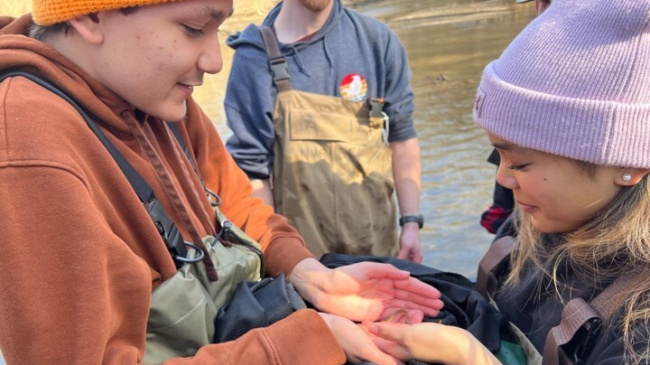Six NOAA employees were recognized as Modern Day Technology Leaders at the annual Black Engineer of the Year Awards offsite link (BEYA) Global Competitiveness Conference, which was held February 7-9, 2019, in Washington, D.C. These awards recognize significant achievement in science, technology, engineering, and math (STEM).
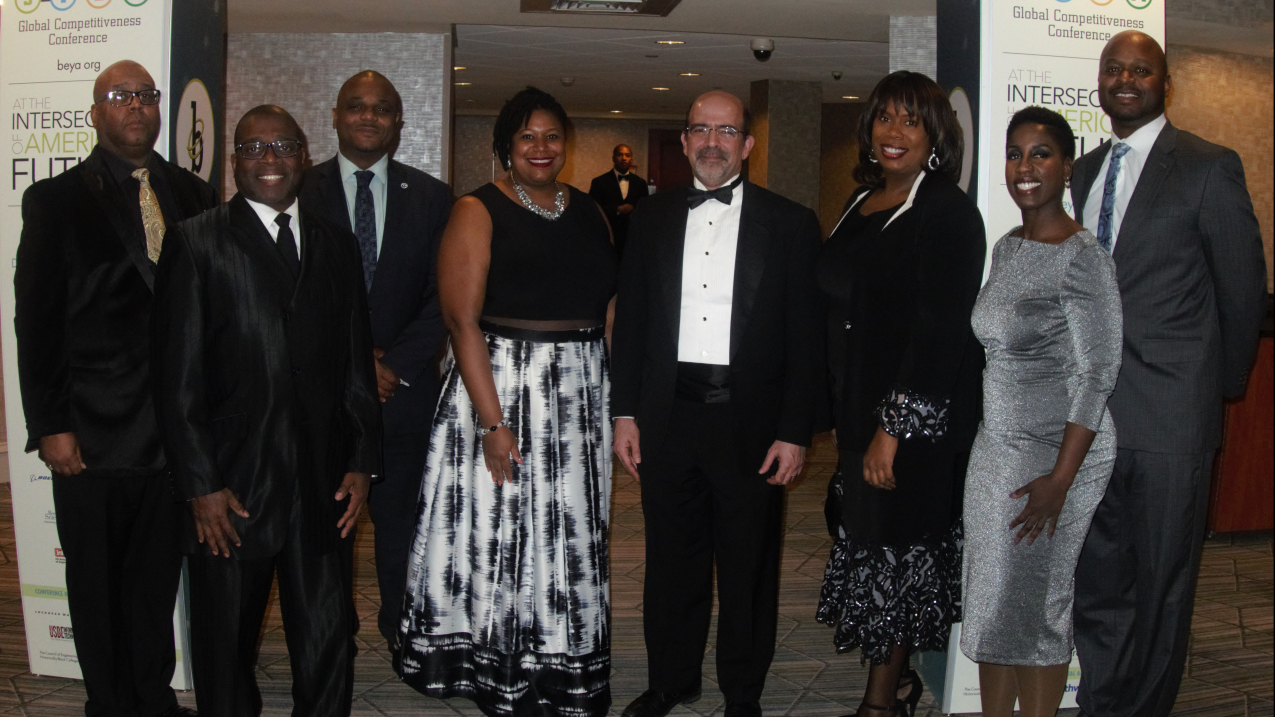
NOAA's Deputy Undersecretary for Operations, Ben Friedman (center), enjoyed an evening of honoring scientific achievement at the BEYA Gala on Saturday evening, February 9, 2019. From left to right are Kenneth Bailey (OICR), Salim Abddeen (OICR), Dr. Lonnie Gonsalves (NOS), Dr. Jamese Sims (OFCM), Ben Friedman (NOAA), Dr. Kandis Boyd (OAR), Jennifer Dickens (OCIO), Dr. DaNa Carlis (OAR). (Image credit: Courtesy of DaNa Carlis)
This year marks the 33rd annual BEYA STEM Conference and its celebration of outstanding achievements in STEM fields across the public, private, and academic sectors. BEYA brings together professionals and students to share their experiences, network, and to explore STEM career paths. This year, NOAA staff attended the career fair and encouraged students to apply to the Pathways Internship Program through USAJobs.
“Congratulations to NOAA’s inspiring recipients of the Modern Day Technology Leader Award,” said Louisa Koch, Director of NOAA Education. “Many of the award recipients are graduates of historically black colleges and universities that NOAA has worked closely with for many years through the Educational Partnership Program with Minority Serving Institutions. It's rewarding to see these individuals recognized for their accomplishments, and I'm proud to know that I work for an organization that is committed to investing in a diverse and inclusive workforce."
Here, we highlight the award recipients and celebrate their significant achievements. Take a moment to learn about their paths to a career at NOAA and their advice for future STEM leaders.
Dr. Lonnie Gonsalves
Dr. Lonnie Gonsalves is an environmental scientist for the National Ocean Service, where he is the portfolio manager for the Ecological Forecasting Roadmap. In this role, Gonsalves connects science with services like Harmful Algal Bloom forecasts that protect coastal communities. Gonsalves completed his doctoral degree at the University of Maryland Eastern Shore with support from the NOAA Graduate Sciences Program. After graduating, he helped implement an ecological assessment of the Chesapeake Bay. Gonsalves has complemented his science efforts with direct engagement in NOAA’s diversity and inclusion initiatives by working closely with NOAA’s Educational Partnership Program with Minority-Serving Institutions. He supports the NOAA Technical Monitor to the NOAA Center for Coastal and Marine Ecosystems offsite link, the agency’s flagship program to increase minority student training in coastal and marine ecosystems, environmental and data sciences.
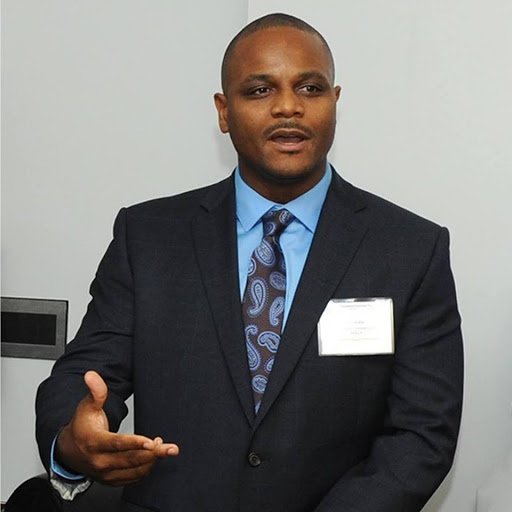
What sparked your interest in STEM?
I grew up in eastern North Carolina where I spent my days as a kid fishing, crabbing, and exploring the woods and nearby creeks. My parents nurtured my interests through books and numerous trips to our local parks and the nearby aquarium. The biotech boom of the 1990’s led me to study molecular biology as an undergraduate student. During my final two years as an undergrad, I was fortunate to have a professor who took time to demonstrate how molecular biology can be applied to fisheries and marine science. This eventually led me to graduate school and a subsequent career in NOAA.
What’s the best part about working at NOAA?
The people. This agency possesses scientists, engineers, and other professionals who have a broad diversity of skill sets. We successfully work together to conduct NOAA’s mission in an interdisciplinary fashion. Our people are dedicated to public service and strive to maintain an environment of cooperation and teamwork. Throughout my eight years at NOAA, it has been a pleasure to work for an agency where no matter the challenge, you know that your team has the skills and the will to see the job through.
What advice would you give to upcoming STEM professionals?
I admire the drive of the students and young professionals today. They are looking for success now rather than the traditional view of building success over years of work. With this mindset, I believe young STEM professionals should view themselves as their own business by:
- Investing in oneself; take the time to gain technical expertise in the tools, technology, or best practices that are in demand today and likely in the future.
- Keeping an open eye to new and emerging markets for those skills, expertise, and areas of interest as there is a big world of science out there. STEM professionals can easily find where they may have technical skills in a specific area (e.g., drone technology) that are directly applicable to a STEM field that they had not previously considered (e.g., protecting endangered whales).
- Dream big, then take the small tactical steps needed to achieve those dreams.
Dr. Michelle Hawkins
Dr. Michelle Hawkins is Chief of the Severe, Fire, Public, and Winter Weather Services Branch in the Analyze, Forecast and Support Office (AFSO) of NOAA’s National Weather Service (NWS). Hawkins oversees the development of requirements, policy, and procedures for all NWS winter, fire, public, and severe weather forecast and warning services. Hawkins established collaborations with federal health partners to minimize the health impacts of extreme heat events and was an author on the temperature-related Illness chapter of the U.S. Global Change Research Program’s Climate and Health Assessment. Hawkins galvanized efforts to inspire a diverse and inclusive office culture. With Hawkins’ leadership, AFSO has evolved to be more inclusive, proactively supporting NOAA’s diversity and inclusion goals. Hawkins earned a Ph.D. in atmospheric sciences at Howard University with support from the NOAA Center for Atmospheric Sciences offsite link. In her free time, she enjoys vacationing with her husband and eight-year-old daughter.
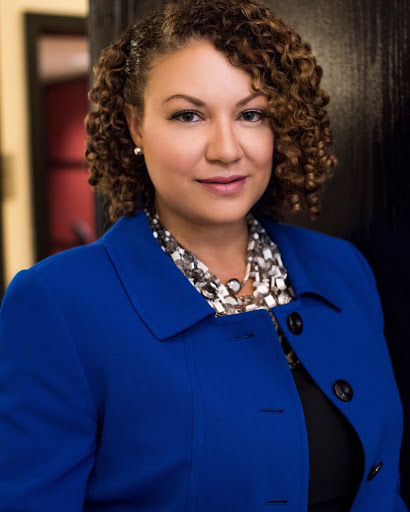
What sparked your interest in STEM?
I have always loved science and the excitement that comes with learning how things work. I was always mesmerized by the severe storms and winter weather that passed through my hometown of Chicago. My interest and subsequent career in weather was solidified by my involvement in a summer program focused on atmospheric sciences during my undergraduate years at Howard University.
What’s the best part about working at NOAA?
Knowing that our work contributes to saving lives. I never take for granted that the programs I lead, the policies we develop, and enhancements to services are all meant to save lives and protect people from the impacts of weather-related hazards. It’s rewarding to work in a field were you can practice servant leadership [a form of leadership built on the principle that service is first and foremost as a leader] on a daily basis.
What advice would you give to upcoming STEM professionals?
Be flexible and remain open to opportunities that you didn’t see coming your way! You may not feel ready, but say ‘yes’ to growth opportunities. On the other side of it you will have learned new skills, expanded your network, made a few new friends, and prepared yourself for the next opportunity.
Dr. Terence Lynch
Dr. Terence Lynch is the senior management and program analyst for NOAA’s Office of Coast Survey. His responsibilities include budget formulation, strategic planning, and advocacy for diversity and inclusion. Lynch’s professional career began in 2001 as a supervisory program analyst for the USDA’s Agricultural Research Service’s National Program staff in Beltsville, Maryland. Since joining NOAA in 2007, Lynch has benefited from several leadership assignments. He was NOAA’s 2011 Combined Federal Campaign Manager and is a graduate of NOAA’s Leadership and Competencies and Development Program. In addition, Lynch is a 2017 Excellence in Government Fellow with the Partnership for Public Service and a graduate of the General Services Administration Performance Improvement Council’s Government Performance Ambassador Program. Lynch obtained a Ph.D. from Virginia Polytechnic Institute and State University.
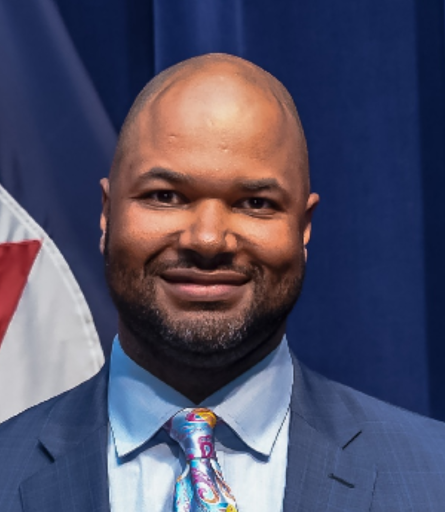
What sparked your interest in STEM?
Growing up in Louisiana and having a love for the environment and what it has to offer, I became interested in trying to research and answer the “why” question to those things impacting the environment. I realized there was a need for more diversity and also a shortage of male educators so I made the decision to pursue the STEM route to affect change and encourage others that looked like me to do the same.
What’s the best part about working at NOAA?
The best part about working at NOAA is working with dedicated professionals who embrace the mission and understand the importance of what we do/provide and how it impacts others.
What advice would you give to upcoming STEM professionals?
There are a lot of unknowns when it comes to “science” and also the jobs that we do. If given the opportunity, be willing to share your experiences with others, and hopefully your story will generate interest and inspire the next group of STEM professionals.
John Moore
John P. Moore III is a forecaster for the National Weather Service (NWS) in Jackson, Mississippi. His career at NWS has spanned over six years with a prior stop at NWS Memphis. As a forecaster, Moore delivers effective weather forecasts and warnings to 58 counties and parishes in Central Mississippi, Eastern Louisiana, and Southeastern Arkansas. He is known for finding innovative ways to provide life-saving weather information to underserved communities. Moore prides himself in mentoring a diverse range of college and high school students who are interested in STEM careers. He is the NWS Jackson liaison for Jackson State University, part of the NOAA Cooperative Science Center for Atmospheric Sciences and Meteorology offsite link, where he helps fuel the connection between NWS opportunities and students majoring in meteorology and emergency management. Moore is passionate about developing new methods and utilizing advanced technology to help NWS meet its mission of saving life and property.
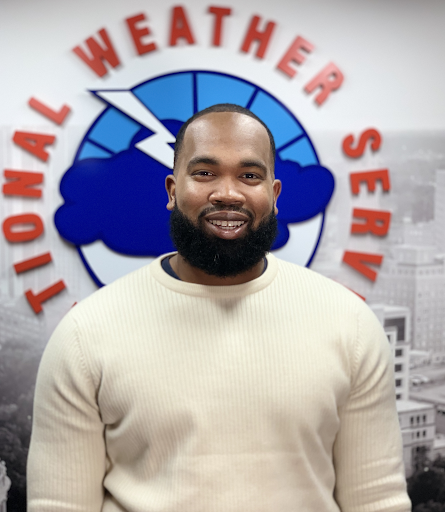
What sparked your interest in STEM?
Growing up, I was a very observant and curious kid who sought to learn as much as possible about the world around him. I chose a path in weather because it was one of the only STEM professions where I could see African Americans actively participating in the early 90’s via the forecasters on The Weather Channel. As I grew older, I began to take interest in the weather events that impacted my home community, like hurricanes Katrina and Rita.
What’s the best part about working at NOAA?
The best part about working for NOAA and the NWS is knowing that our contributions are helping to save the lives of our fellow countrymen.
What advice would you give to upcoming STEM professionals?
The piece of advice I always give students who are about to become STEM professionals is that you don’t have to be a late-career professional to make a difference. You can be a leader from day one. Your experiences and background could provide a more diverse viewpoint on several initiatives and proposals, so don’t shy away from speaking up and making your voice heard.
Warrick Moran
Warrick Moran is a software engineer in the Engineering Standards Division of the NOAA National Weather Service (NWS). Moran’s 17-year career within NWS includes developing software components for emerging and existing systems and managing the development and maintenance of operational systems environments. As a technical lead for software projects, Moran directed the deployment of the NWS National Law Enforcement Dissemination System into the NWS cloud environment. During his tenure as a project manager, Moran maintained the software elements of the radiosonde replacement system used for upper air atmospheric measurement. Warrick performs engineering assessments, evaluations and corrective actions for NWS systems. He earned a B.S. in computer science with a math minor from Georgia Southern University, where he also starred as a 4-year starter on the university’s Division I baseball team. He acquired a master’s in information technology from John’s Hopkins University and recently received a System Engineering Certification from Stevens Institute of Technology.
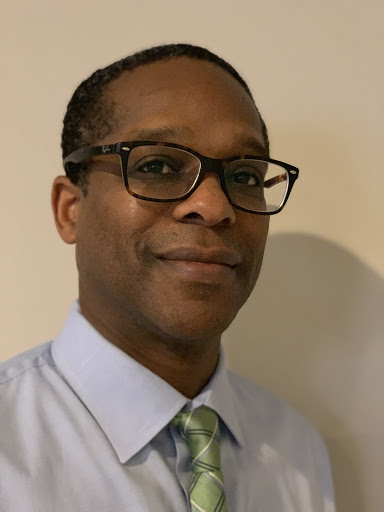
What sparked your interest in STEM?
From an early age, my mother included me in science and math-oriented programs which built the framework for my eventual love affair with computers. After begging and receiving a Commodore 64 at the age of eight, the seed was firmly planted. My mother continued to nurture the seed by providing me with any publication dealing with software and computers that I could find. Her actions built the desire within me to design and innovate, and I continue to honor her sacrifice by continuing to improve my craft.
What’s the best part about working at NOAA?
NOAA has afforded me the ability to utilize modern software techniques and components to create operational systems that enable our mission for the protection of life and property and enhancement of the national economy. This freedom is a perk that is not often received within a government environment. The engineering freedom and the ability to fulfill my civic duty keeps me coming to work day-in and day-out.
What advice would you give to upcoming STEM professionals?
Upcoming STEM professionals must begin to appreciate ethics as we move into an increasingly automated and data-centric world. The concept of “do no harm” that is explicitly spelled out within the Hippocratic Oath will eventually be adopted by professionals within STEM fields.
Reginald Ready
Reginald Ready is a senior duty meteorologist at the NWS National Centers for Environmental Prediction's Central Operations (NCO). Ready provides 24/7 monitoring and support for computer operations at the National Center for Weather and Climate Prediction and beyond. Ready is responsible for quality control of meteorological data for ingest in forecast models. He has coordinated and initiated several meteorological applications in the National Centers for Environmental Prediction (NCEP) Production Suite for customers and partners, serving as the 24/7 communications point-of-contact by providing situational awareness of the weather. Ready received a local NWS Isaac Cline Award for providing technical leadership and guidance during the merger of the NCO and NWS tech control organizations. He also received a group NOAA Administrator's Award for challenging the status quo in driving agency priorities on diversity and inclusion. In his free time, Ready volunteers for NOAA activities geared toward increasing participation of women and underrepresented minority groups in STEM career fields.
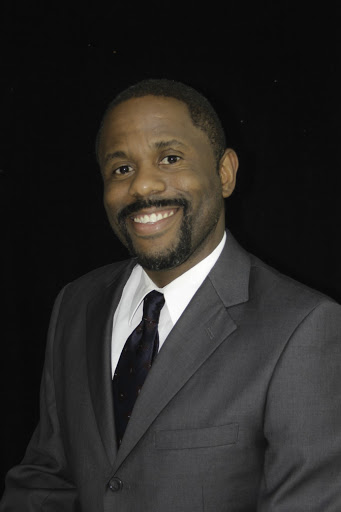
What sparked your interest in STEM?
Growing up in Orlando, Florida, I became fascinated with the weather at an early age by observing the near-daily summertime phenomenon of seabreeze-triggered thunderstorms. My fascination with the weather deepened as a teenager through volunteer service at the Orlando Science Center, where I was afforded the opportunity to perform hands-on demonstrations to educate the general public about severe weather safety.
What’s the best part about working at NOAA?
Knowing that I’m working with a team of dedicated professionals who work around the clock to satisfy the mission of saving lives and protecting property.
What advice would you give to upcoming STEM professionals?
Be open to opportunities for growth in your chosen career, find areas of commonality between your professional development goals and your agency’s mission, and be willing to give back to STEM professionals coming behind you.
Want to learn more about these insightful STEM leaders? Check out their full biographies.



